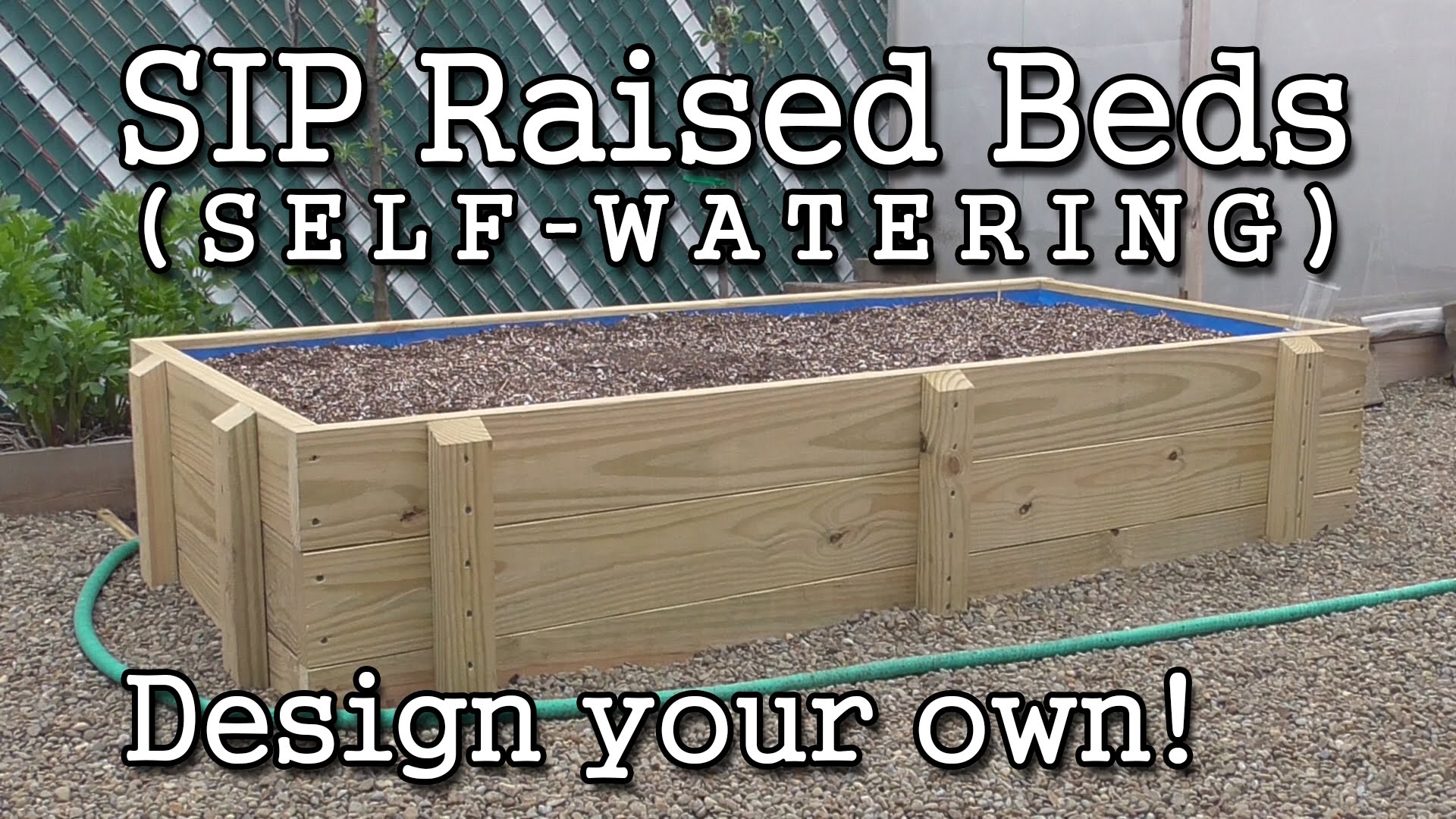This tutorial explains how to build an S.I.P. (self watering, sub irrigated planter) raised garden bed. But going further, it also teaches the fundamental mechanics of a self-watering system. Although this focuses on a wicking bed, the same principles apply to sub-irrigated tote containers. You’ll be able design and build a water-saving grow system that meets your individual requirements.
Have you wondered: What type of materials should I use? Is treated lumber bad? What kind of lining should I use? How deep should the bed be? How high should the overflow drain be? Should the pipes be wrapped? Do you need a plastic cover? What kind of dirt or soil should I use? What kind of potting mix do you need? Do you need to use fertilizer strips?
Once you have the answers to these questions, all of the guess work is removed. The only thing left is for you to start designing and building! Once you’ve made the jump to a sub-irrigated garden, you’ll quickly appreciate the convenience. This allows you to be away for longer periods. Rain water is collected and saved for later use. When you do need to water, it’s so easy. You’ll love it, and your plants will love YOU!
Quick Specs:
– Internal Dimensions (select your own length & width): 71.75″ L x 30″ W x 16.5″ (deep)
– Over Flow Drain Hole Height: 3.25″ up from bottom
– Recommended Gap Between Drain Pipes: 0.25″ (minimum) – 0.75″ (maximum)
How To Build The Raised Bed…
How To Monitor Moisture Levels In The Bed…
Watering & Aeration Screen…
Winterizing Planters & Totes…
If you like this idea, be sure to share it with your friends and inspire someone you know. Anything becomes possible with just a little inspiration…

